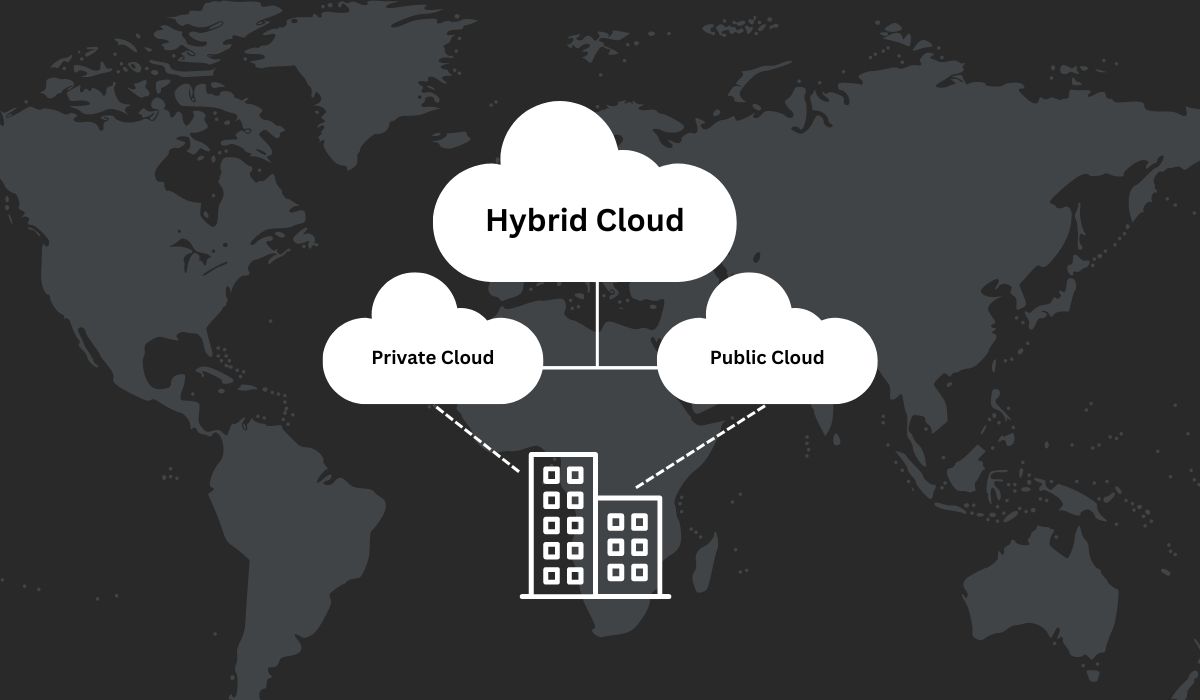As we march forward in the digital age, businesses are continually seeking efficient ways to store and manage data. One solution that’s gaining traction is the use of hybrid cloud infrastructures. A hybrid cloud combines the advantages of both private and public clouds, offering businesses a flexible and scalable solution for their data needs.
In this blog post, we will explore the benefits of a hybrid cloud and best practices for unlocking its power.
Inside This Article
- What Is Hybrid Cloud?
- Benefits of Hybrid Cloud
- Best Practices for Implementing Hybrid Cloud
- Conclusion
What Is Hybrid Cloud?


Hybrid cloud refers to a computing environment that combines the use of private and public clouds to meet an organization’s data storage and processing needs. In a hybrid cloud setup, businesses have the flexibility to choose which workloads and data to keep in a private cloud and which to store in a public cloud.
A private cloud is a dedicated infrastructure owned and managed by the organization or a third-party service provider. It offers control, security, and customization options but may have limited scalability and higher costs. On the other hand, a public cloud is a shared infrastructure provided by cloud service providers like Amazon Web Services (AWS), Microsoft Azure, or Google Cloud Platform.
By utilizing a hybrid cloud, businesses can keep sensitive and critical data on-premises or in a private cloud while utilizing the public cloud for non-sensitive data, computing power, and additional storage capacity.
Benefits of Hybrid Cloud
1. Gain a Competitive Advantage
When you think about leaders in the category, companies such as Microsoft, Google, and Amazon come to mind. These corporations are not only leveraging hybrid cloud for their operations but are also providing top-notch services for businesses worldwide.
Utilizing hybrid cloud can help companies gain a competitive edge. It allows you to optimize costs, enhance security, and provide faster service to your customers. The hybrid model offers the flexibility of keeping sensitive data on private servers while harnessing the public cloud’s extensive storage and processing capabilities.
2. Enhanced Data Security
In a hybrid cloud setup, you can decide where to store your data based on security requirements. Sensitive information can be kept on a private cloud to ensure its protection, while less critical data can be stored in the public cloud. This setup reduces the risk of data breaches and gives companies more control over their information.
3. Scalability and Flexibility
One significant benefit of hybrid cloud computing is its inherent scalability and flexibility.
With the hybrid cloud, businesses can easily adjust their storage and computing needs according to demand. During peak periods, companies can use public cloud resources to handle the extra load, then scale back when demand decreases. This flexibility saves money and ensures efficient operations.
4. Cost Efficiency
Hybrid cloud allows businesses to pay for what they use, ensuring cost-effectiveness. This pay-as-you-go model means companies can allocate resources according to their needs and budget. The option to scale resources up or down on demand prevents wastage and optimizes costs.
Best Practices for Implementing Hybrid Cloud
Implementing a hybrid cloud model comes with challenges, but these can be effectively managed with the right approach.
Here are some best practices to keep in mind:
1. Understand Your Needs
Before you begin the transition to a hybrid cloud, you should understand your business’s specific needs.
Consider the data security requirements, computing power needs, scalability requirements, and your budget. This initial analysis will guide your hybrid cloud strategy and ensure it aligns with your business objectives.
2. Choose the Right Provider
Choosing the right cloud service provider is crucial to the success of your hybrid cloud strategy. The ideal provider should offer a seamless integration of public and private cloud solutions, robust security measures, and flexibility in terms of scalability.
3. Plan for Integration
Integration is a significant aspect of hybrid cloud deployment. Ensuring that your public and private clouds can sync would be best. This involves choosing compatible platforms, implementing efficient data management practices, and setting up robust security protocols.
4. Regularly Review and Adjust
Reviewing and adjusting your strategy is essential once your hybrid cloud is running. Monitor your usage, identify any issues or bottlenecks, and make adjustments as needed to ensure your hybrid cloud solution is as efficient and effective as possible.
Conclusion
The hybrid cloud offers a powerful solution for businesses looking to optimize their data management practices. It combines the best private and public clouds, offering enhanced security, scalability, flexibility, and cost efficiency.
However, to unlock its full potential, it’s vital to understand your needs, choose the right provider, plan for integration, and regularly review your strategy. By doing so, you can harness the power of hybrid cloud computing and propel your business forward in the digital age.
























